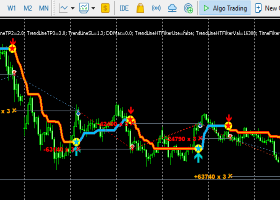
Canadian Dollar Overvalued and Overdue a Correction, According to BNP Paribas
Analysts over-optimistic on almost all counts argues the French lender.
The Canadian Dollar (loonie) has overshot its fundamental value, according to analysts at BNP Paribas, and is therefore overdue a correction
It is now 2-3% above the estimates of true value, based on the price of oil, which is the country’s main export commodity, chief resource and arguably the life-blood of the economy.
The high correlation between the loonie and oil means the currency tends to follow in the commodity’s footsteps.
The current initially inexplicable overshoot of the price of crude by the Canadian buck, however, Paribas put down to short-covering tailwinds.
During the loonie’s mammoth sell-off in 2015, sparked by the precipitous fall in the price of oil, many speculators had built up large short positions, however, the currency’s rapid reversal at the start of 2016 may have taken many bears by surprise and led to panic position closing - also known as ‘short-covering’ - which provided a back-draft to the loonie’s ascent, and now accounts for the 2-3% overshoot:
“Our fair value models suggest the currency is around 2-3% expensive relative to the current level of oil prices, which we attribute at least in part to an unwinding of short CAD positions.” Says the Paribas note.
Copy signals, Trade and Earn $ on Forex4you - https://www.share4you.com/en/?affid=0fd9105
The value attained by the loonie above that of oil is seen as a likely to be returned with a depreciation of the currency:
“We believe the CAD has overshot the recovery in oil prices and should start weakening again.”
More worrying to Canadian Dollar bulls, however, is the French lender’s pessimistic outlook for oil longer-term:
“The decline in oil prices is now looking structurally entrenched. This suggests that, unlike in 2009 when commodity prices rebounded quickly, even at current spot levels the CAD does not appear particularly undervalued.”
Loonie Fails to React to Data Lift
One possible sign the loonie may be reaching a peak is the struggle to eke out further gains despite the release of exceptional data.
The currency remained unmoved by positive news from the Canadian Housing Sector, which saw Building Permits rise by 15.5% in Feb, which was above analysts’ estimates of only 4.7%, and the previous -9.8%.
Normally such a release would be expected to generate some upside, however, the fact that it didn’t is a warning sign sentiment could be turning against the currency.
Friday April 7 sees the release of one of the most important economic metrics for the Canadian Economy, the Labour Force Survey, and it will be interesting to note how the loonie reacts the result, which is currently forecast to show no-change in the unemployment rate of 7.3% in March.
Pessimistic about Growth
Growth forecasts for the Canadian economy of over 2.0% in 2016 and 2017 are overly optimistic, according to Paribas’s Vassili Serebriakov, who writes:
“We are relatively pessimistic on the medium-term outlook for the Canadian economy. We see tepid growth of 1.4% in 2016 and 1.6% in 2017; well below the consensus forecast of 2.2% and the BoC’s 2.4% projection for 2017.”
Nor are claims that the new Liberal government’s pro-growth initiatives likely to stimulate growth, a realistic assessment:
“The government estimates that the fiscal spending measures announced in the March Budget will add 0.5pp to GDP growth in 2016 and 1pp in 2017. We think these projections are overly optimistic.”
Far from being able to ‘take a back seat’ whilst the hand of fiscal policy takes on the task of stimulating the economy, Serebriakov believes the Bank of Canada will soon have to resume its former loose monetary policies, in order to fill the liquidity gap, as well as depreciate the hardening loonie:
“The BoC has been reluctant to push back against CAD appreciation, but, with the government clarifying its fiscal plans and the economy still fragile, we think the BoC could shift to a more dovish bias at its 13 April policy meeting.”
Technical Signs the Currency May be Peaking
Even against a weak currency like the pound, the Canadian Dollar is showing signs it could be losing the advantage, a further symptom of the onset of possible decay.
Although technically still in a down-trend, there is a possibility GBP/CAD may be forming a bullish ‘falling wedge pattern’, as illustrated on the chart below, by Scotia Bank’s Shaun Osborne.
The analyst remarks:
“There is also a risk that price action over the past month or so is carving out a bullish “falling wedge” pattern, indicative of a trend lower that is losing momentum.”
The lack of corroboration from still-bearish indicators, however, means the dominant trend remains bearish for the pound:
“That is not reflected in the still bearishly-aligned and strengthening DMI oscillator on the intraday, daily and weekly charts, however; these signals together suggest the bear trend will persist for now.”


